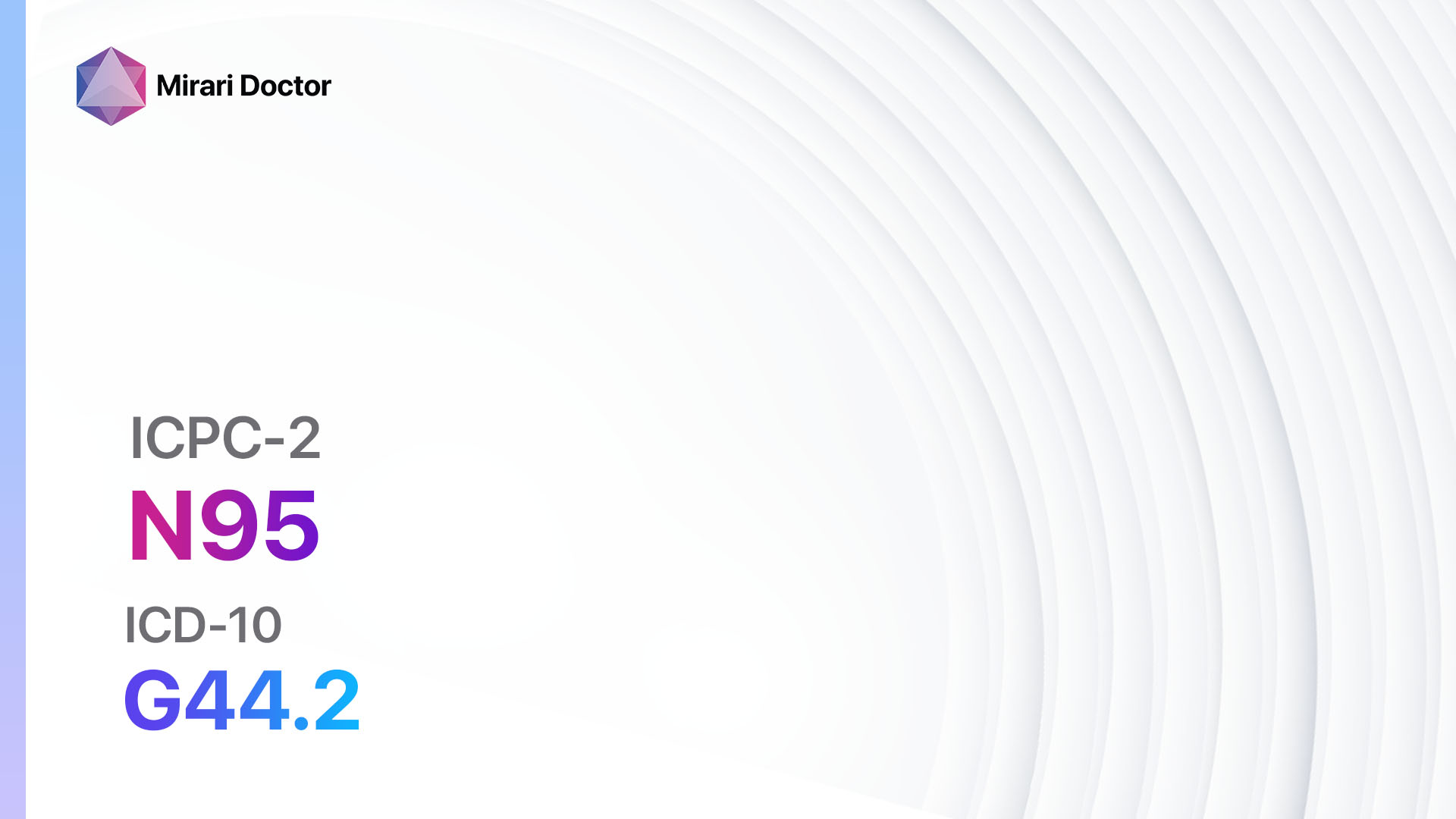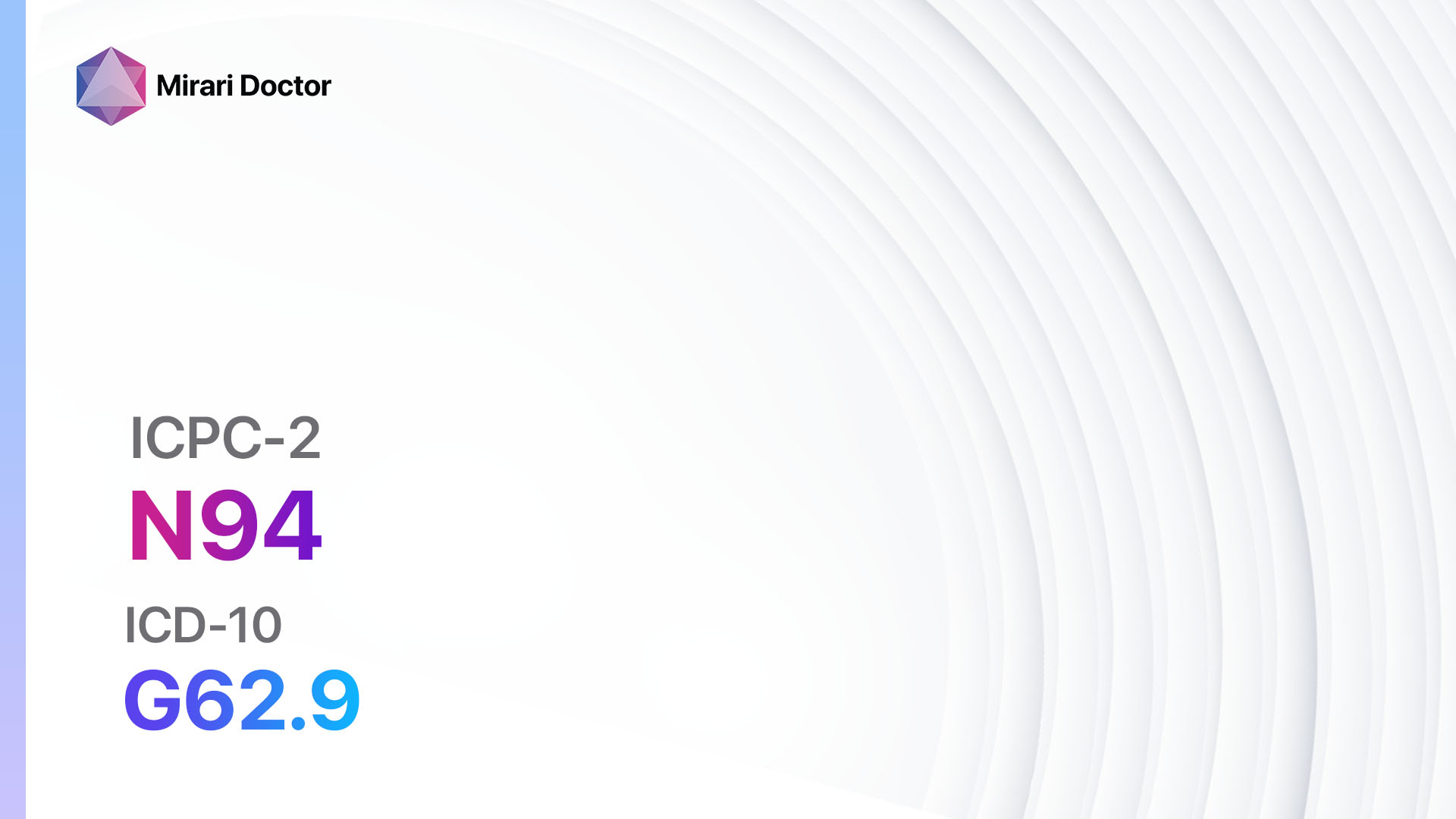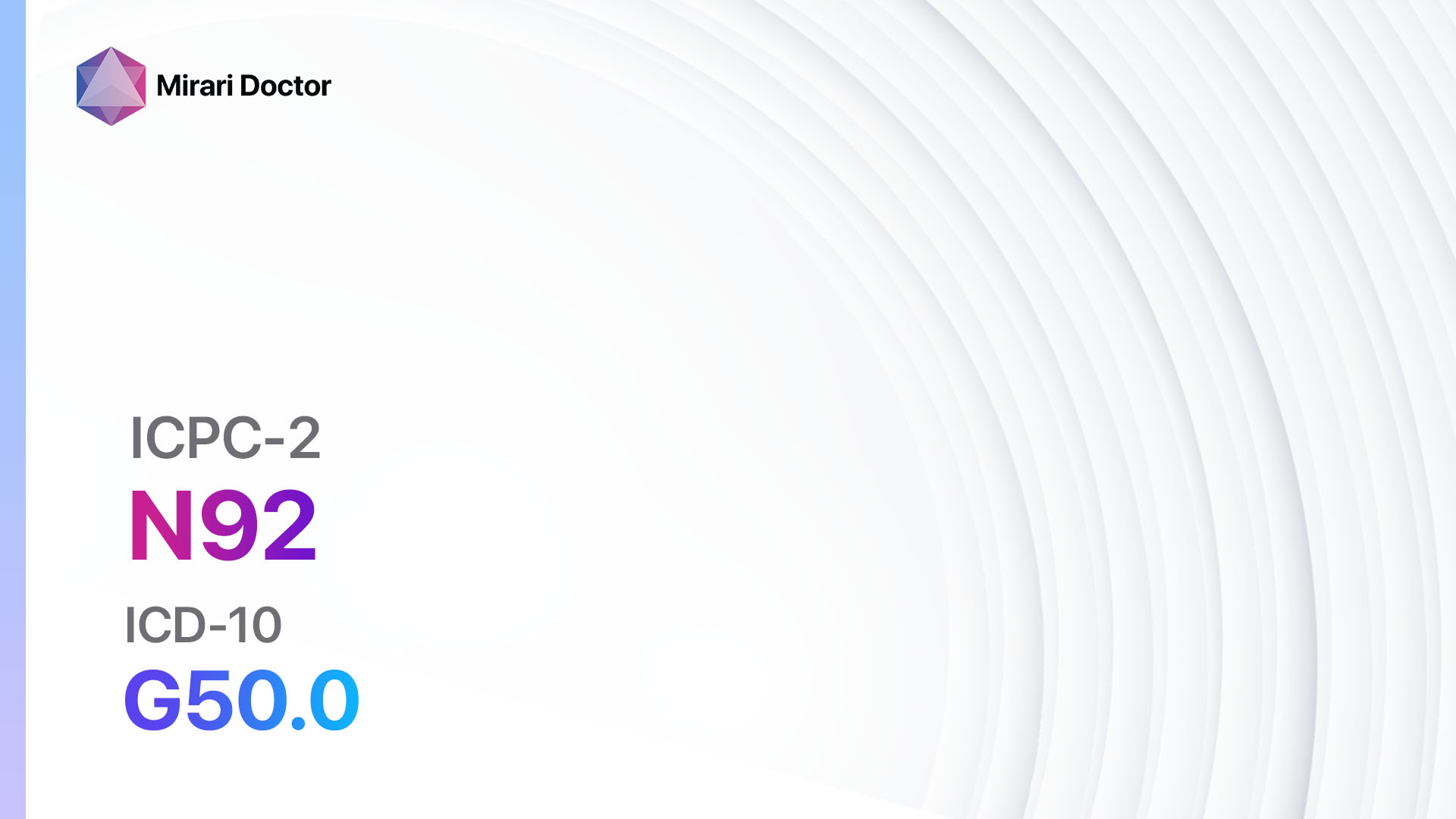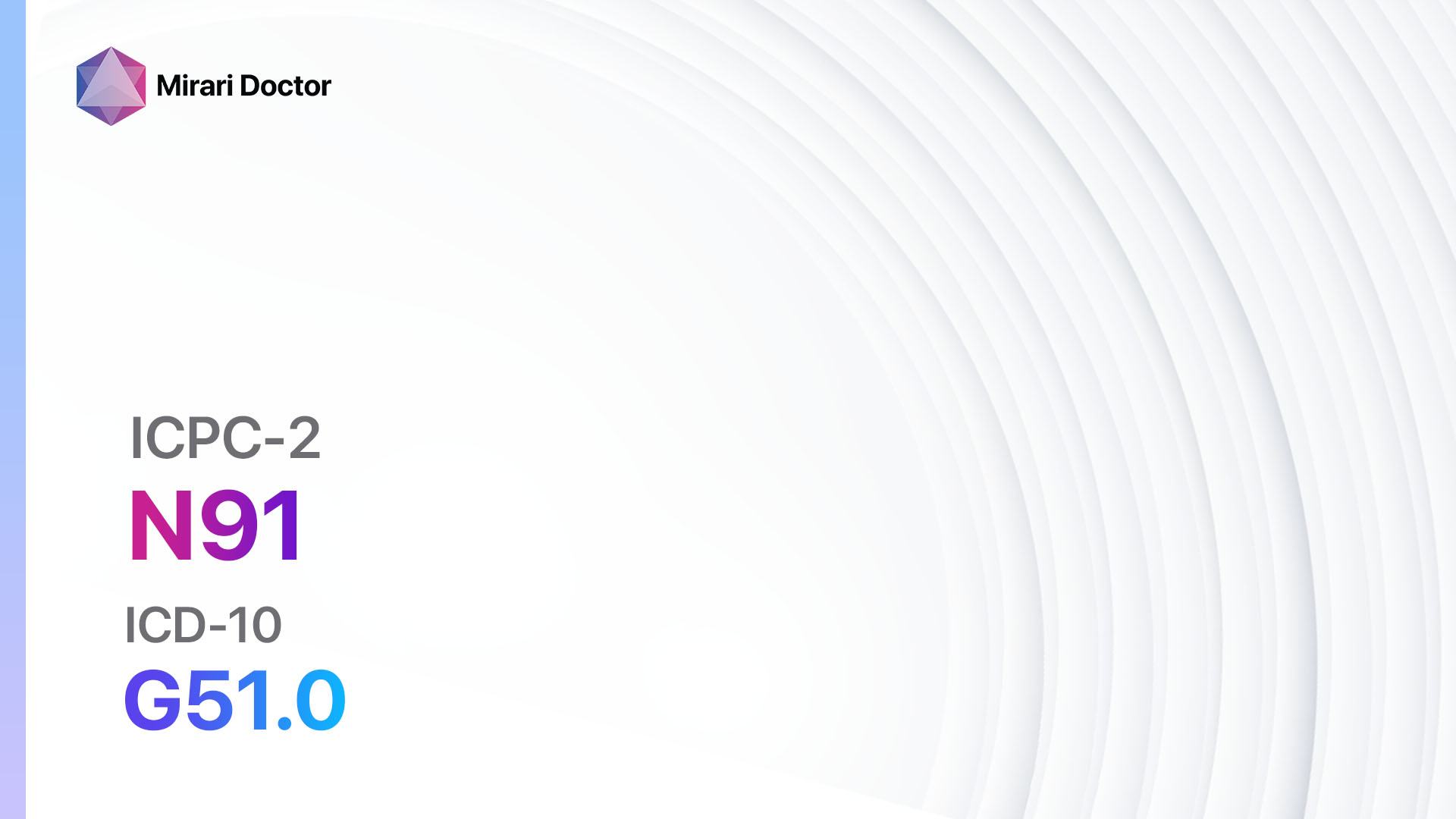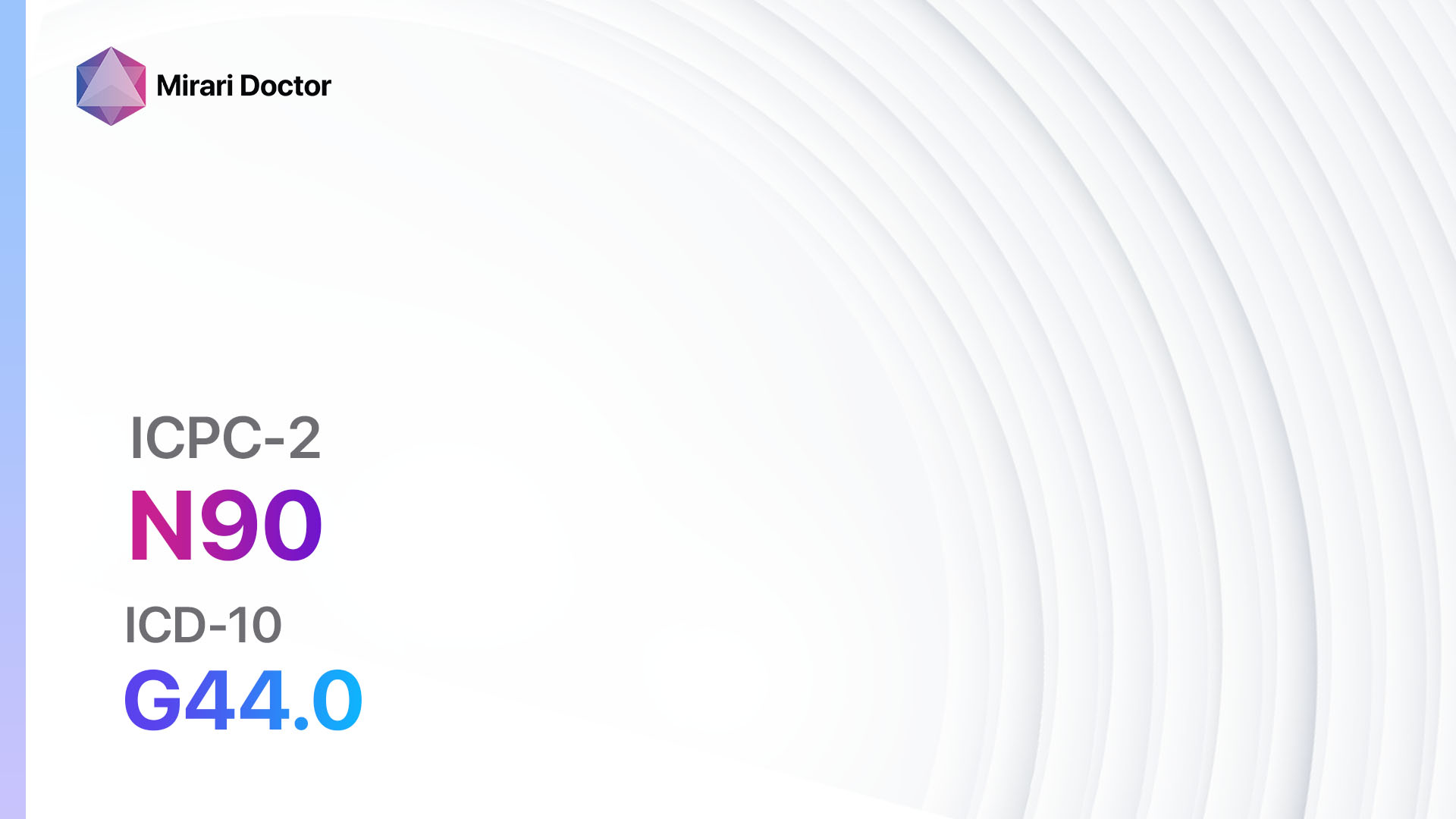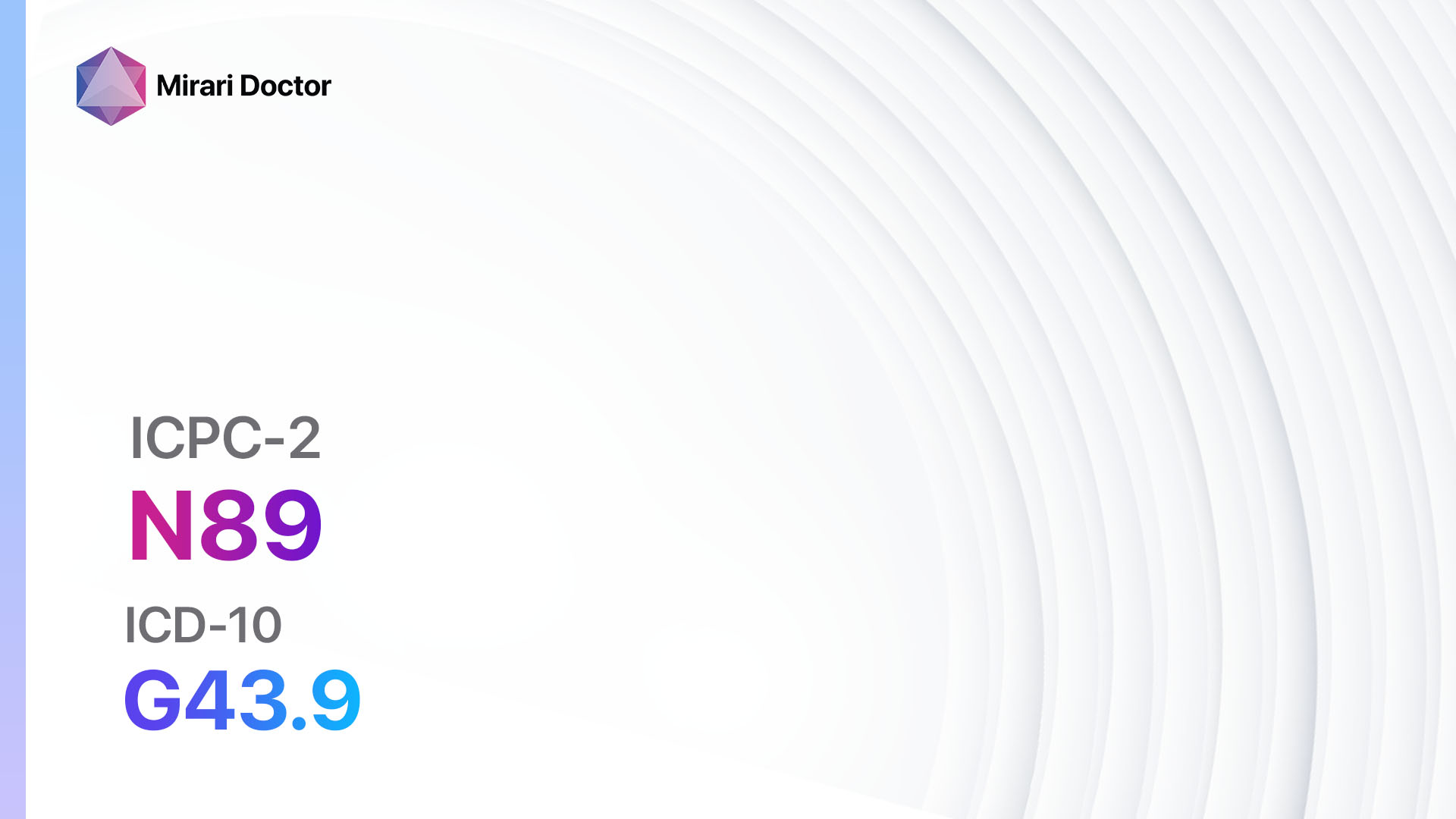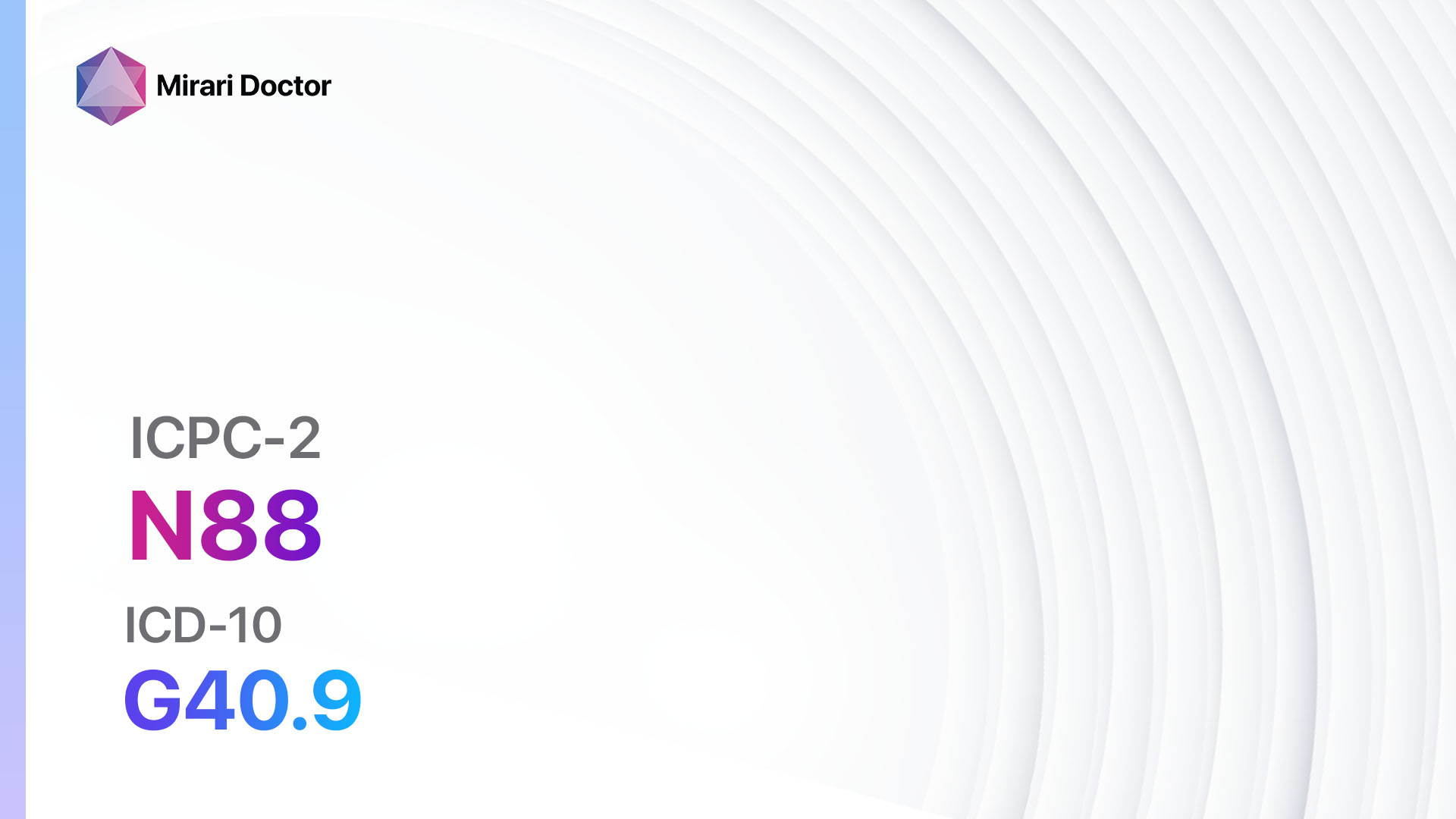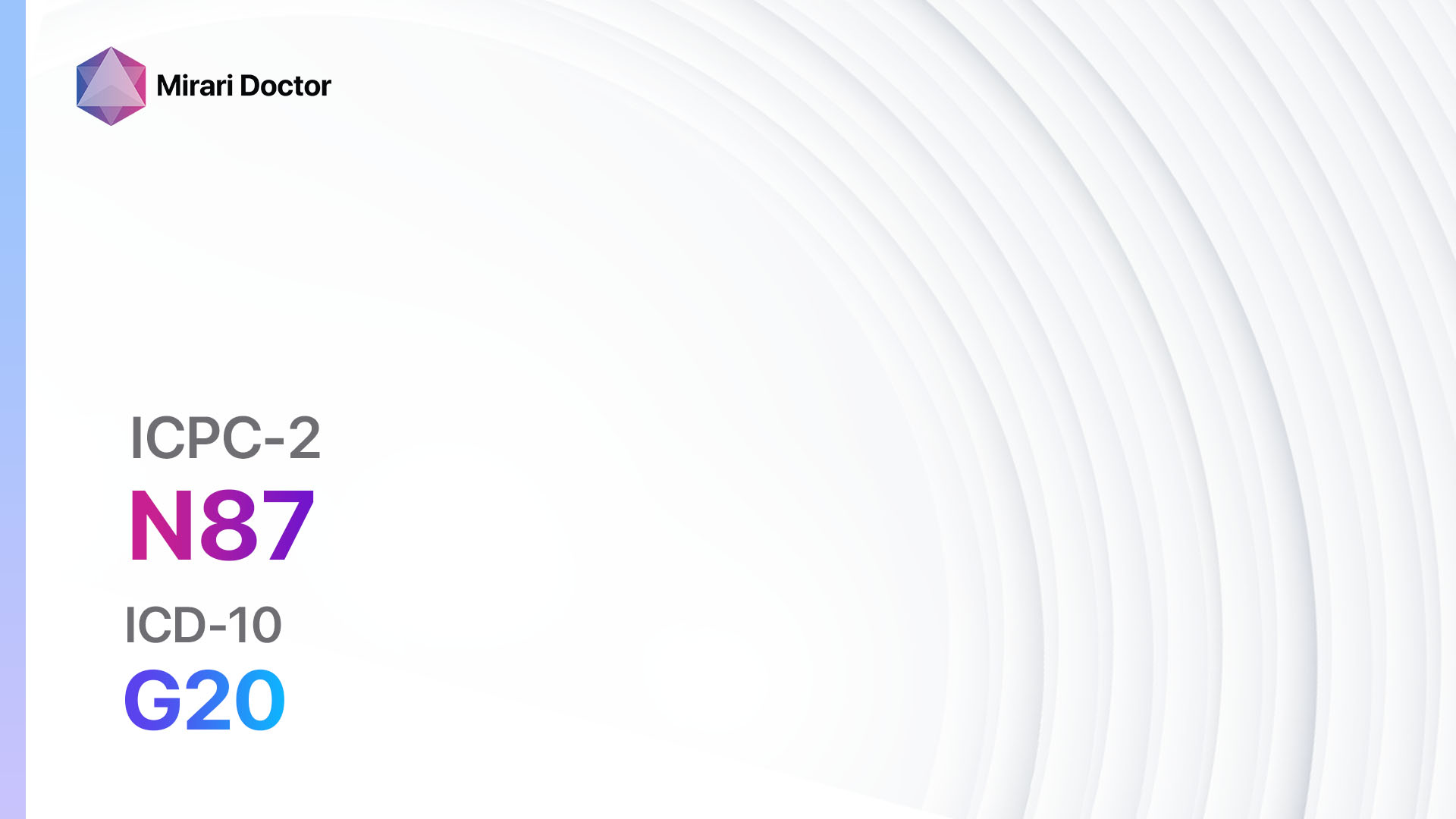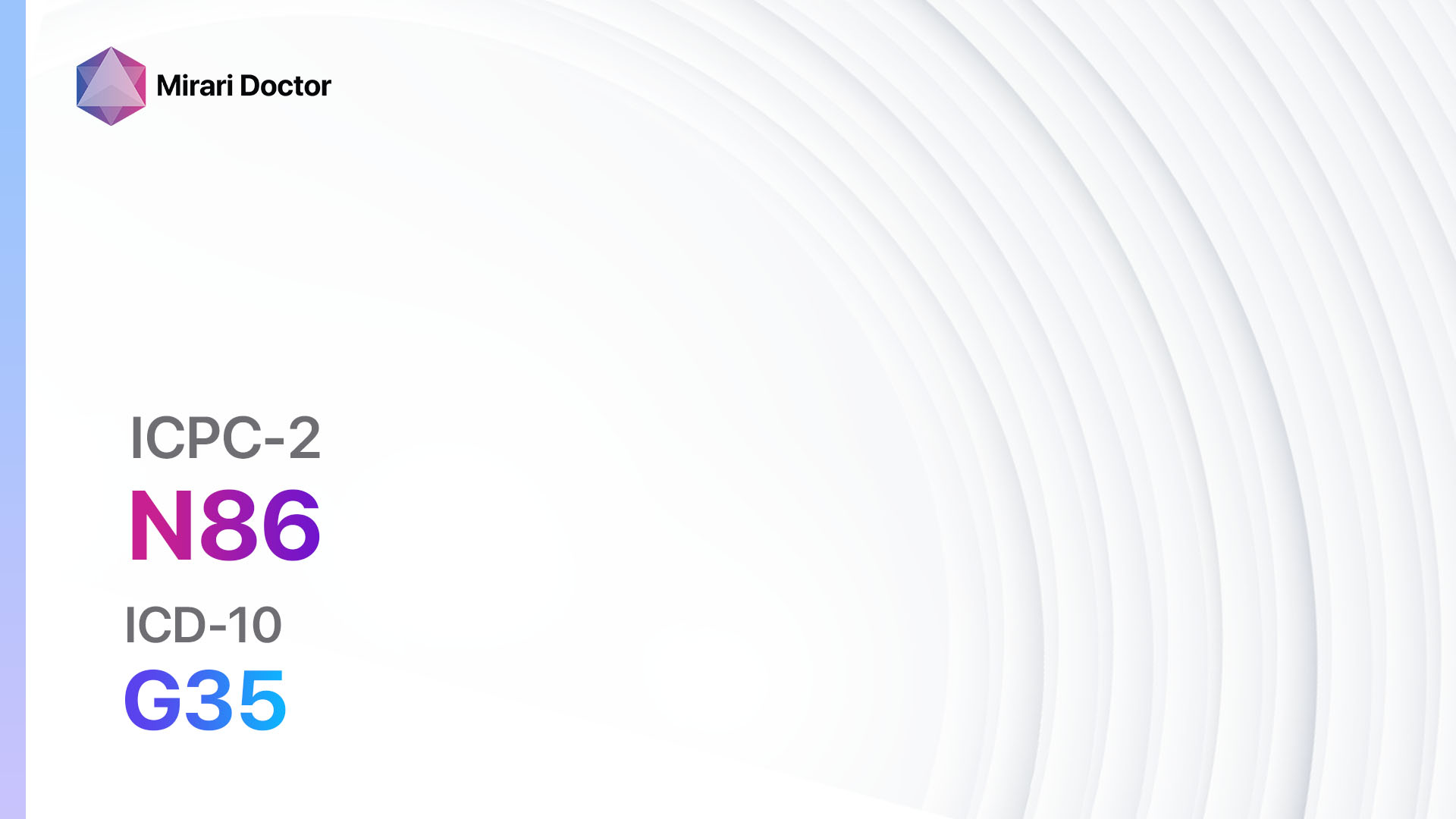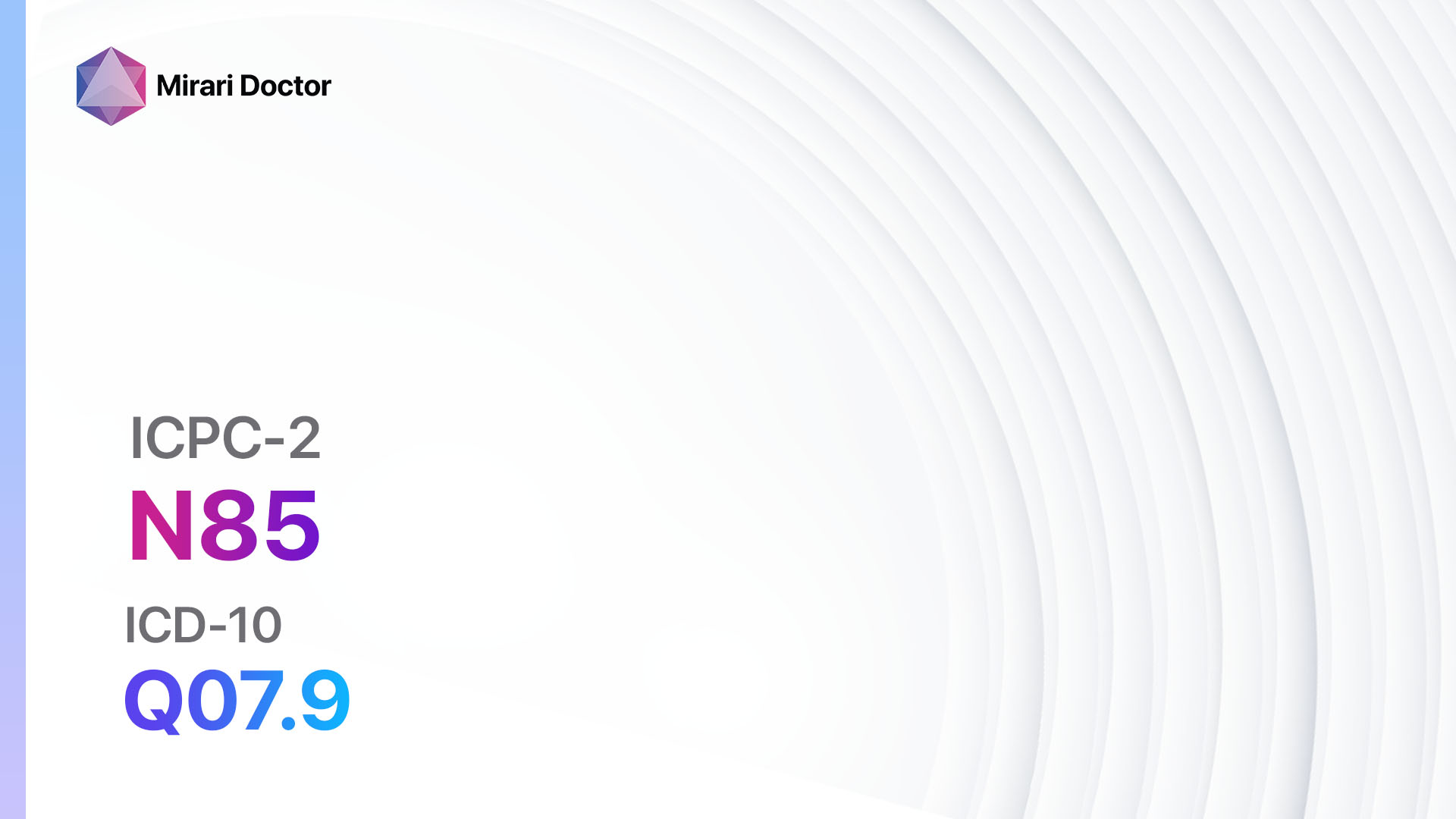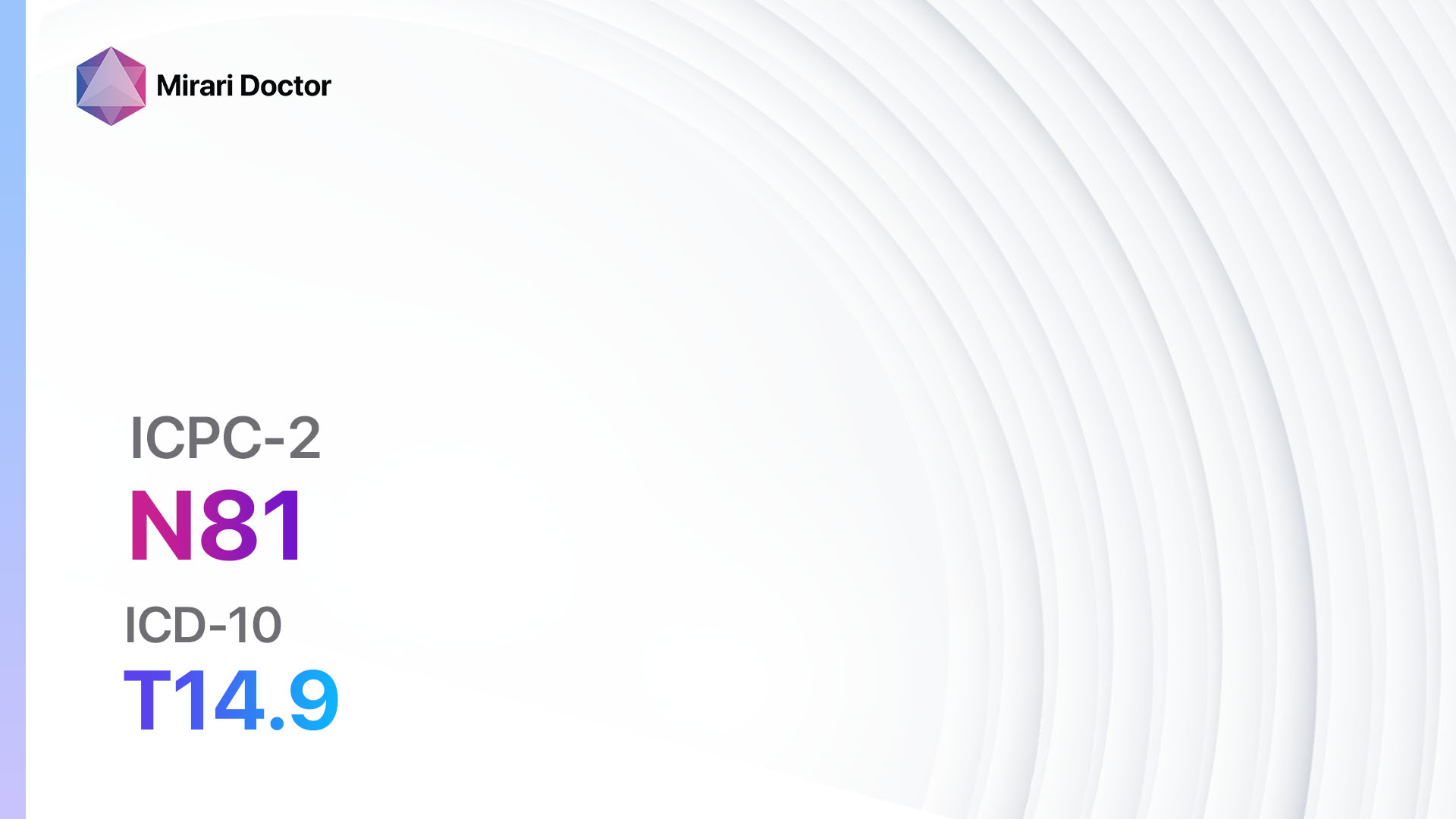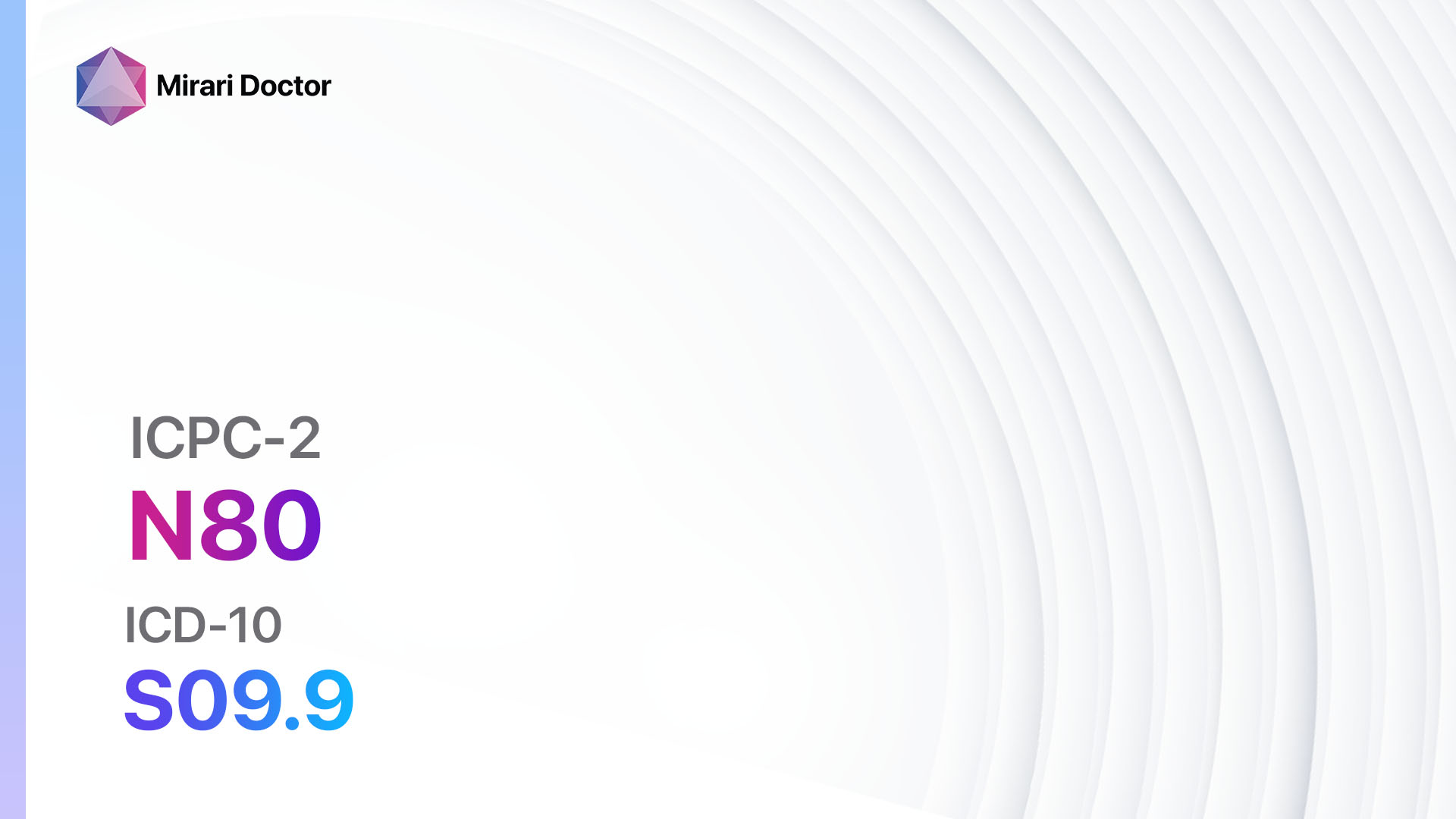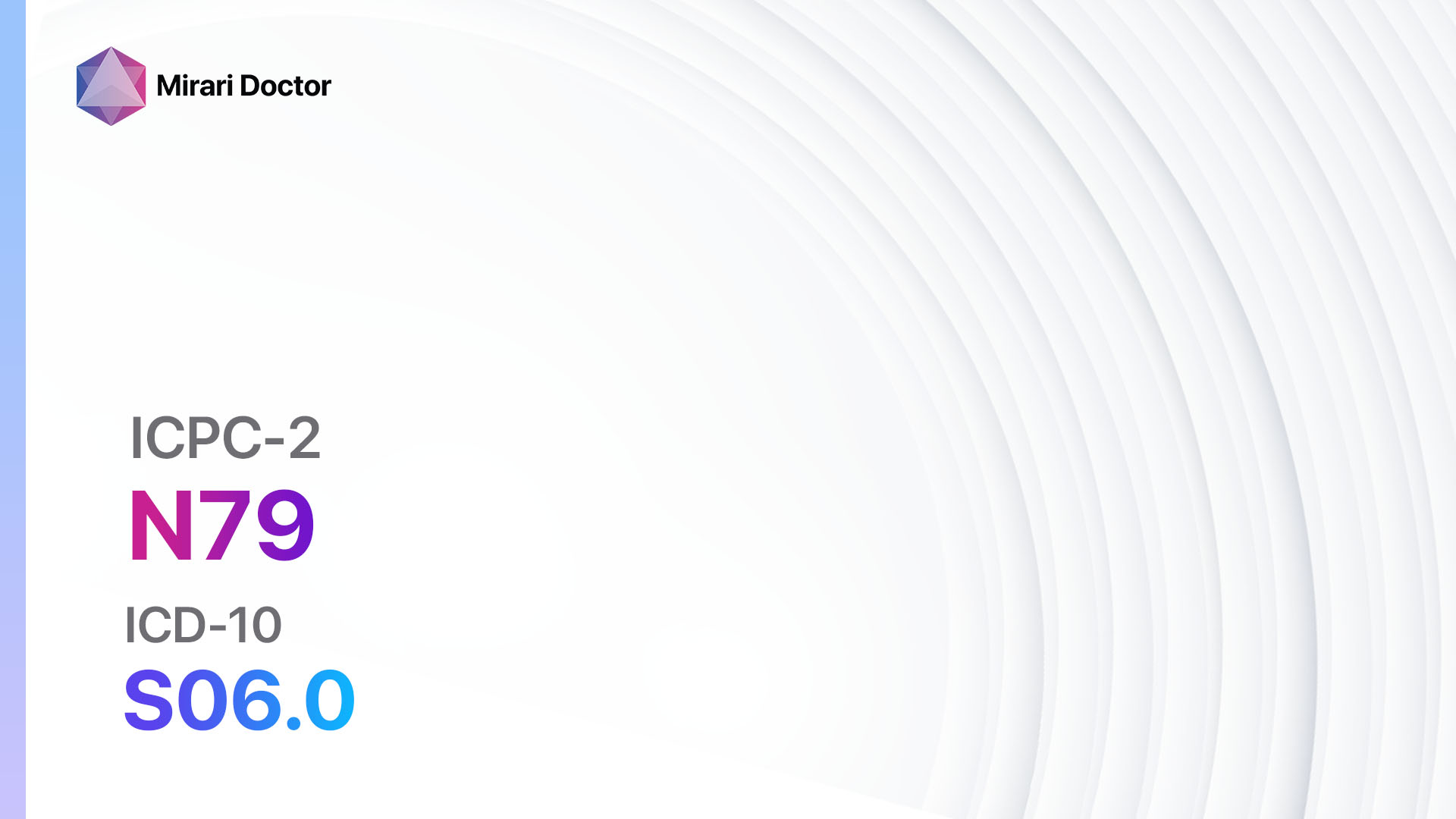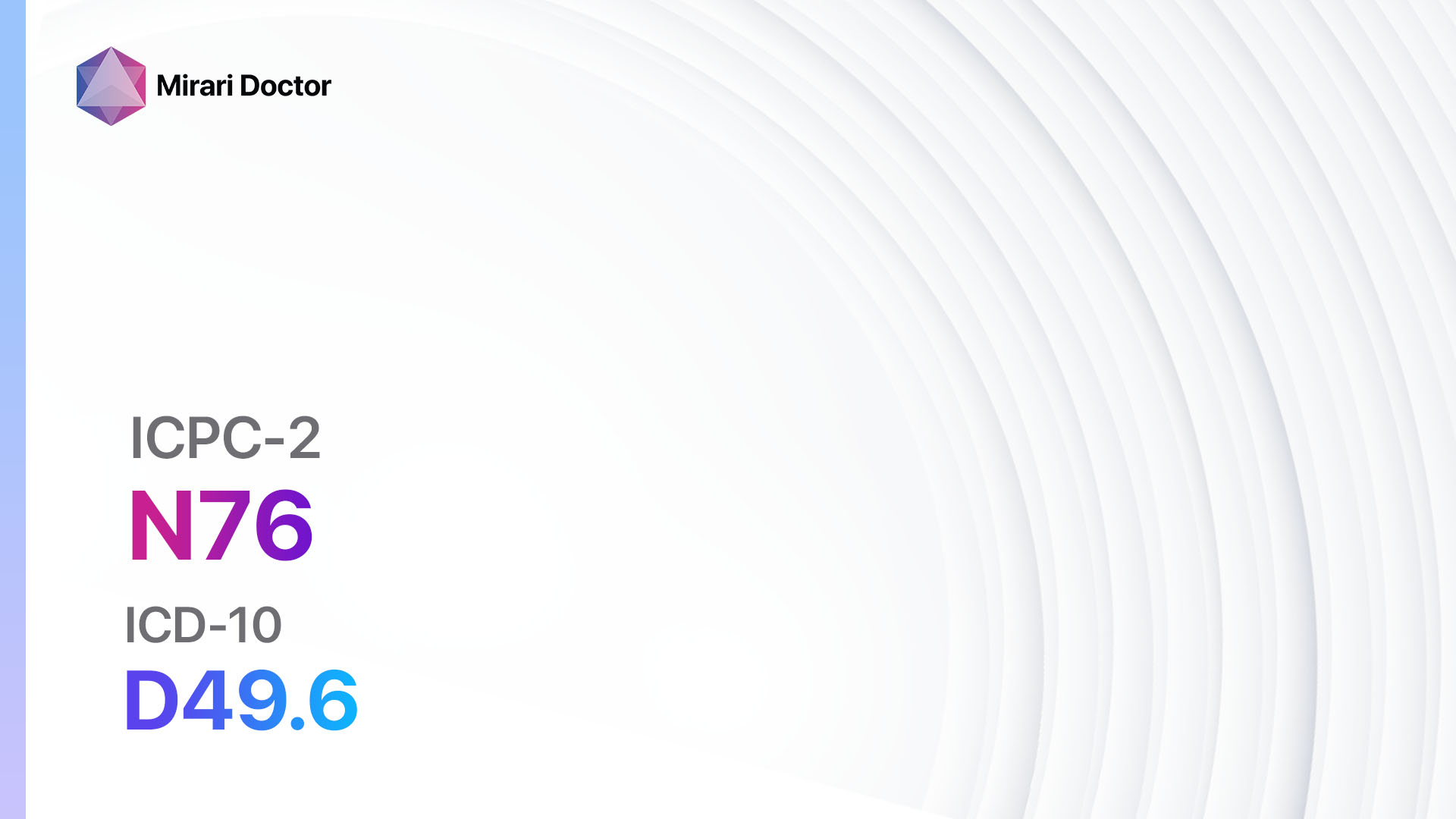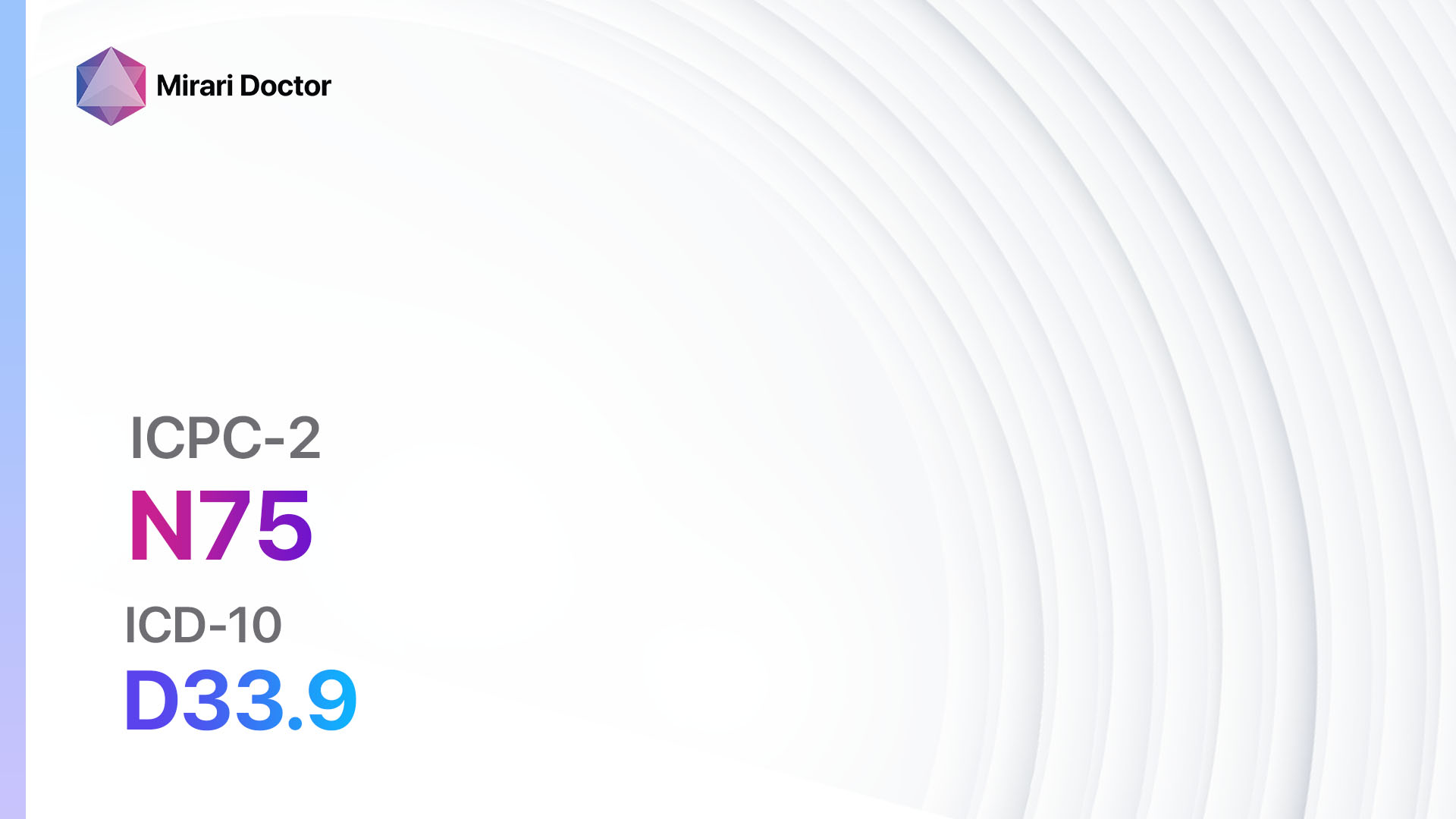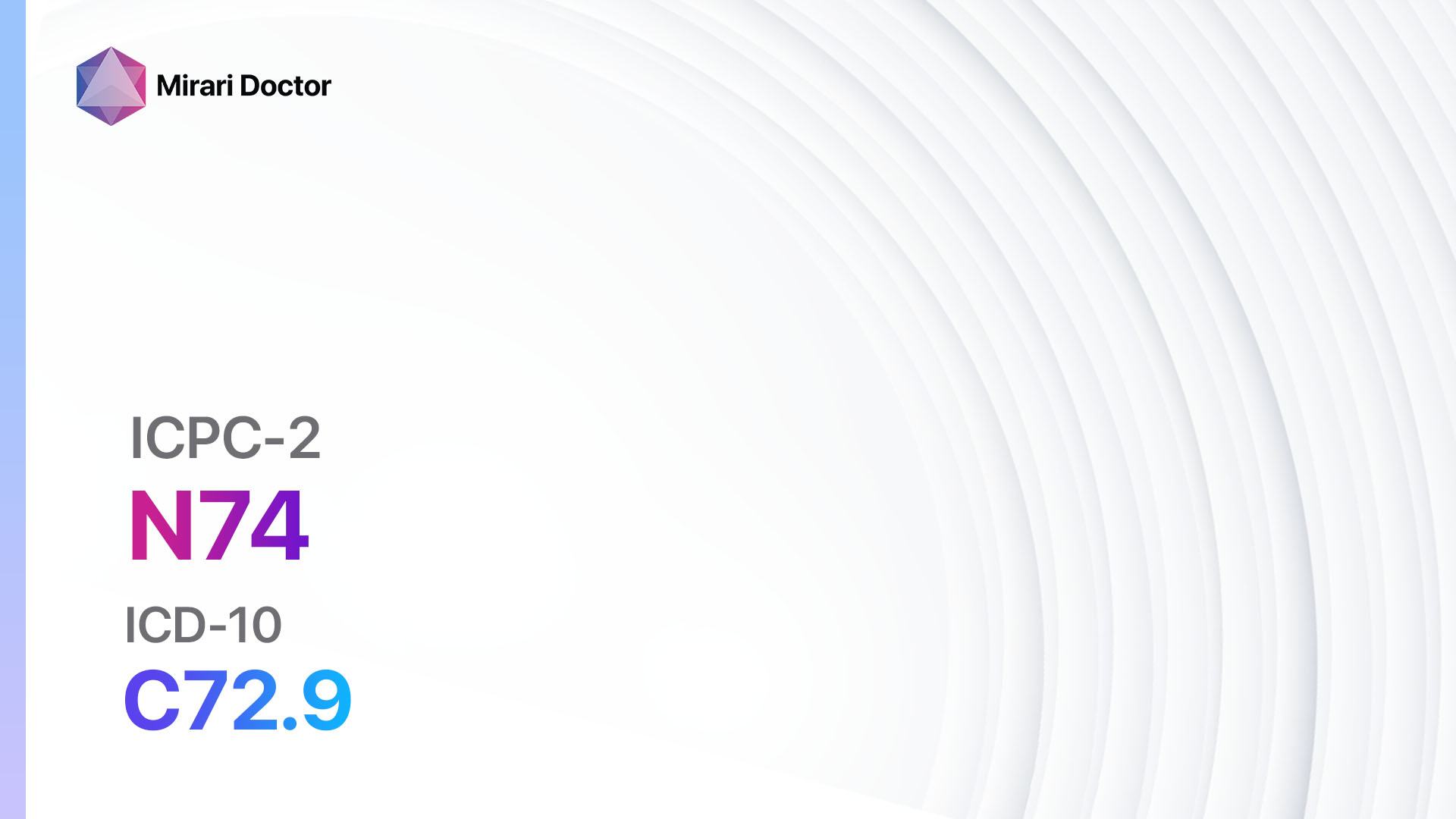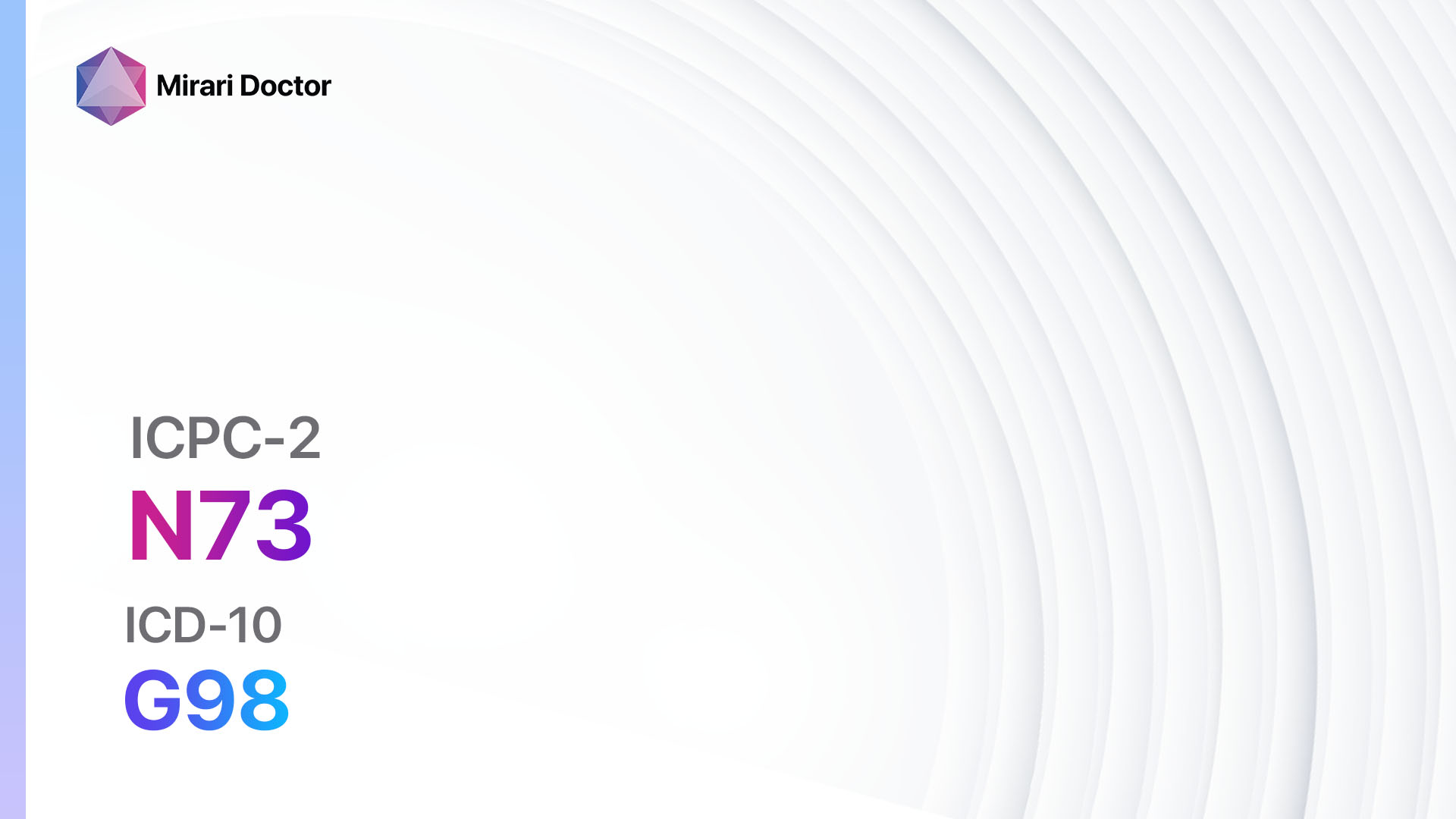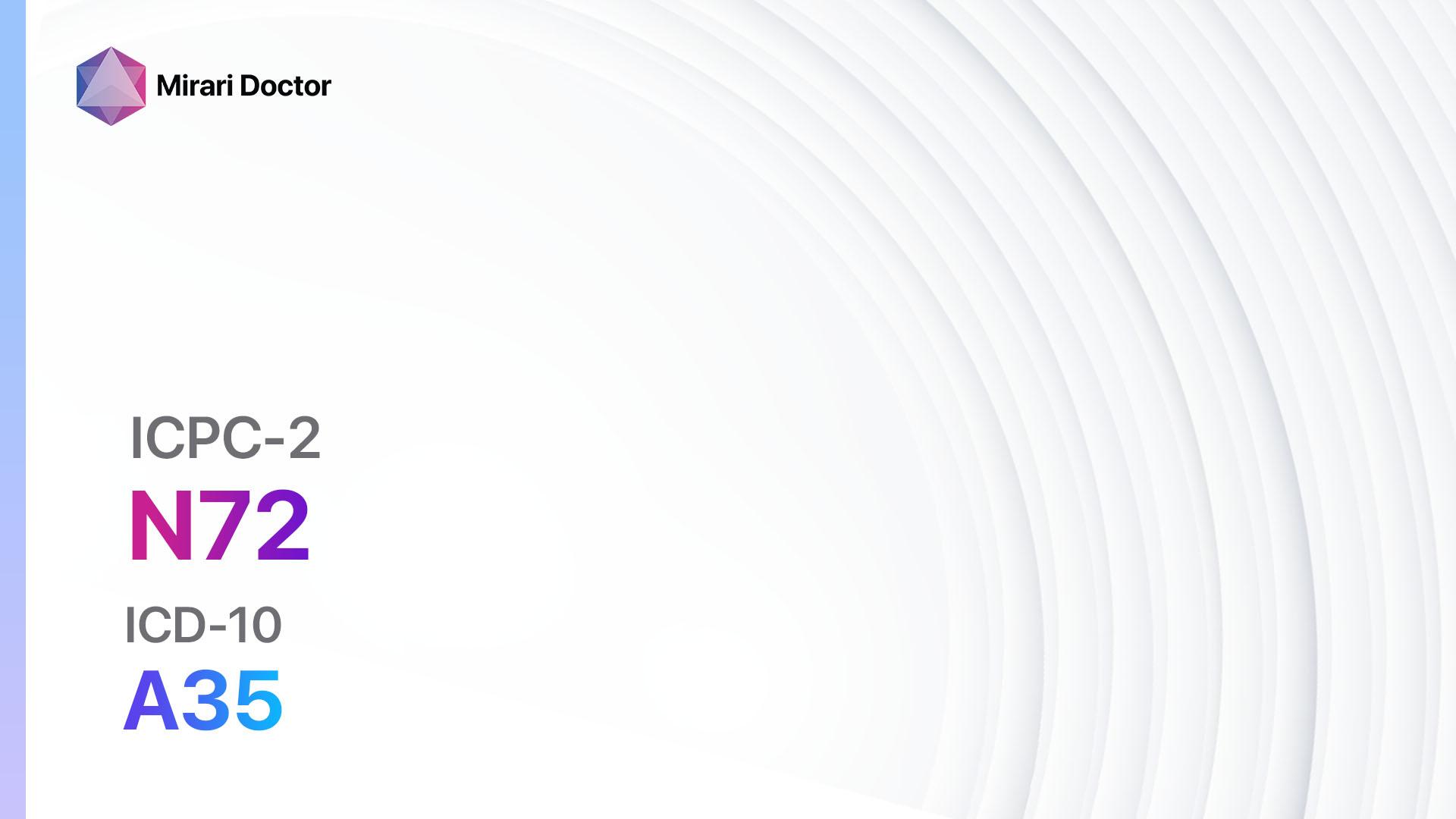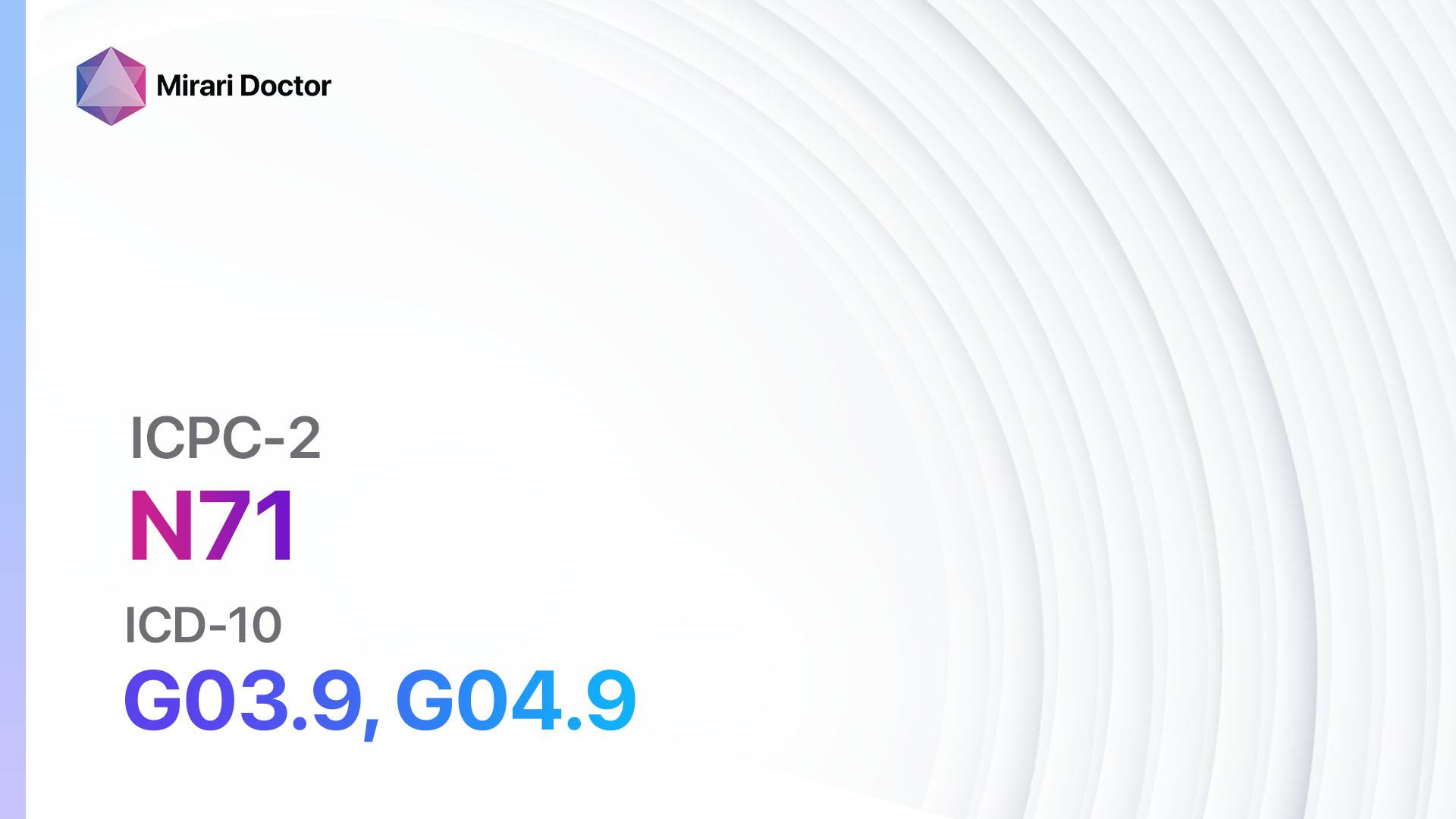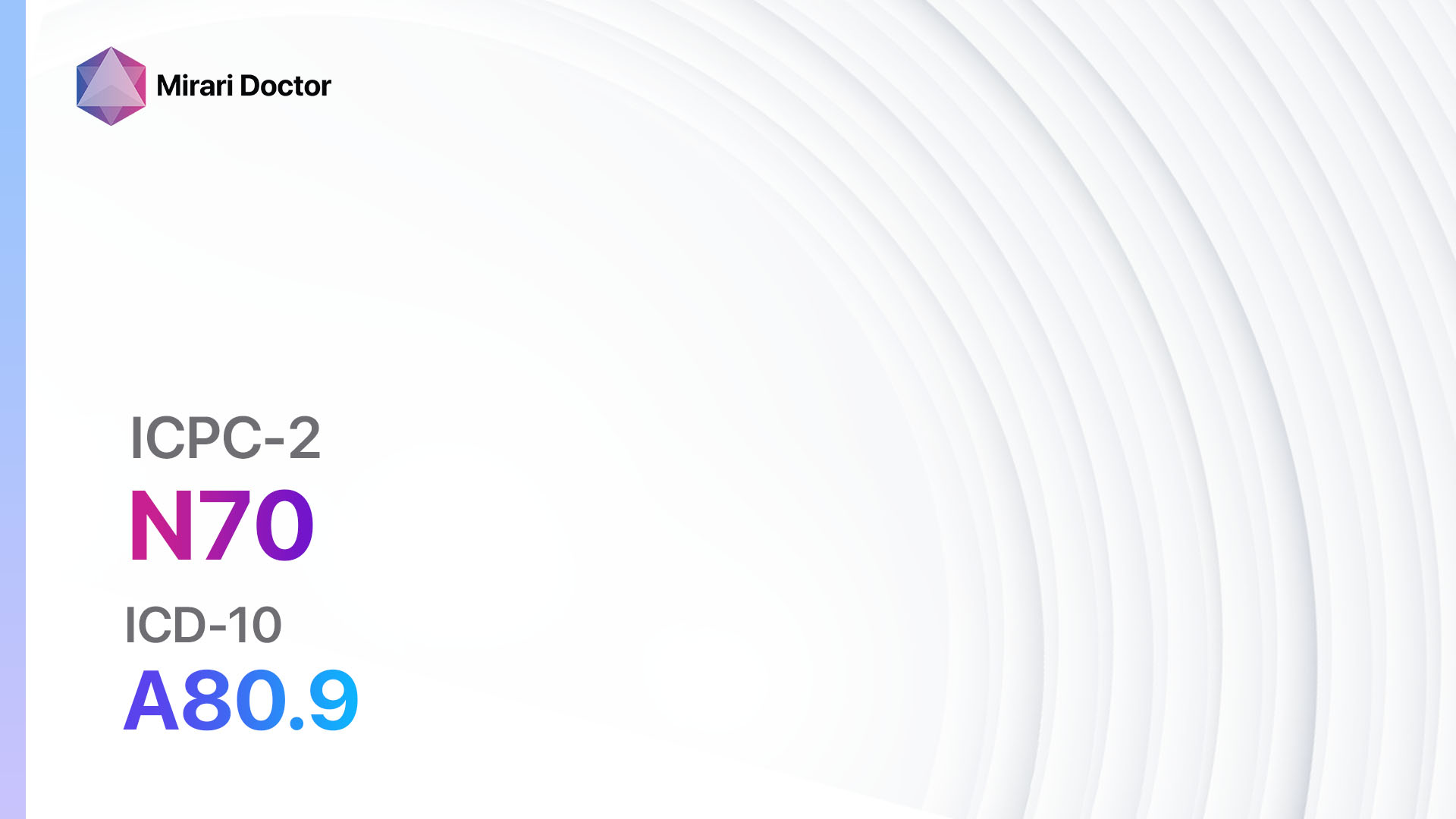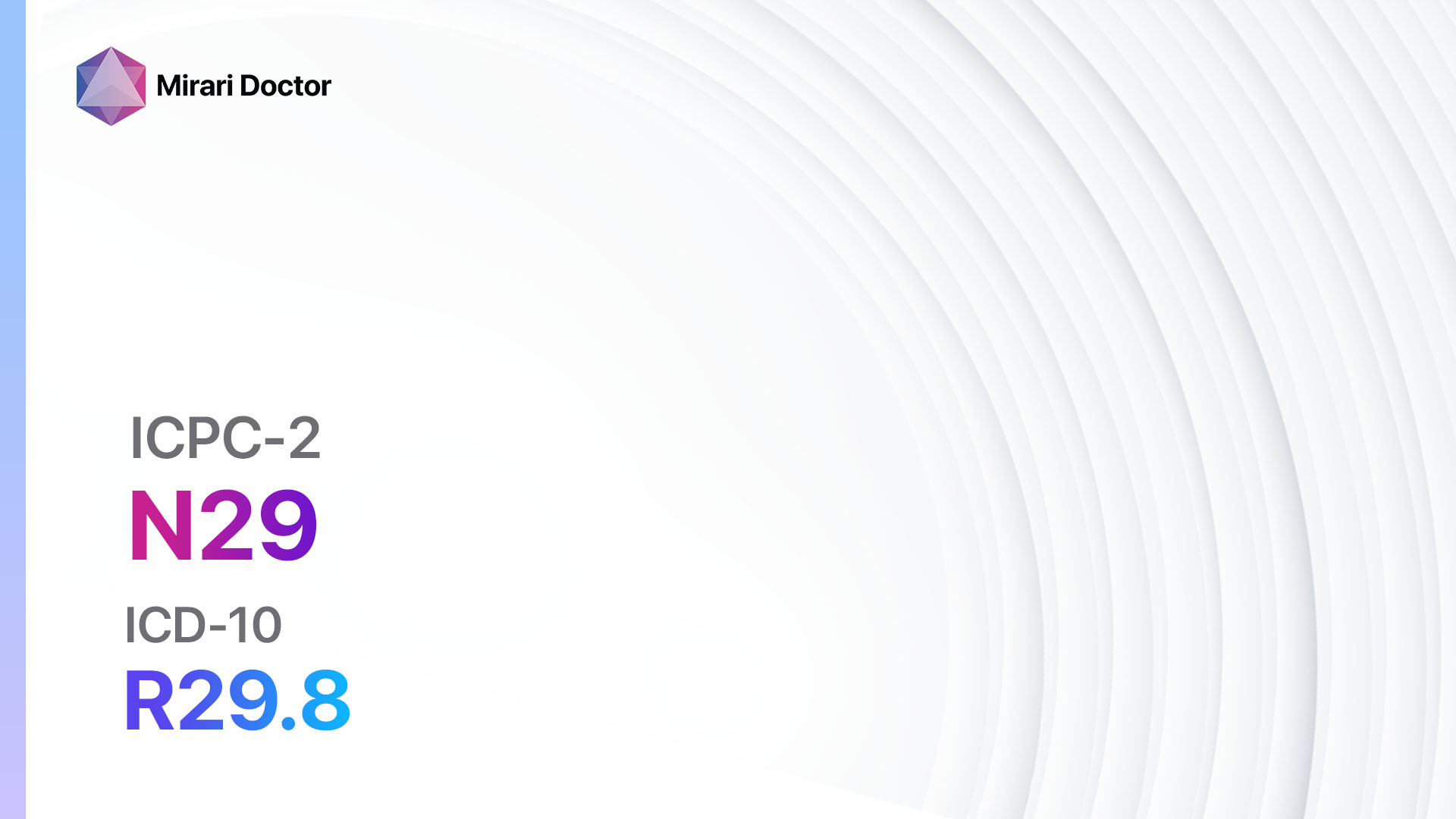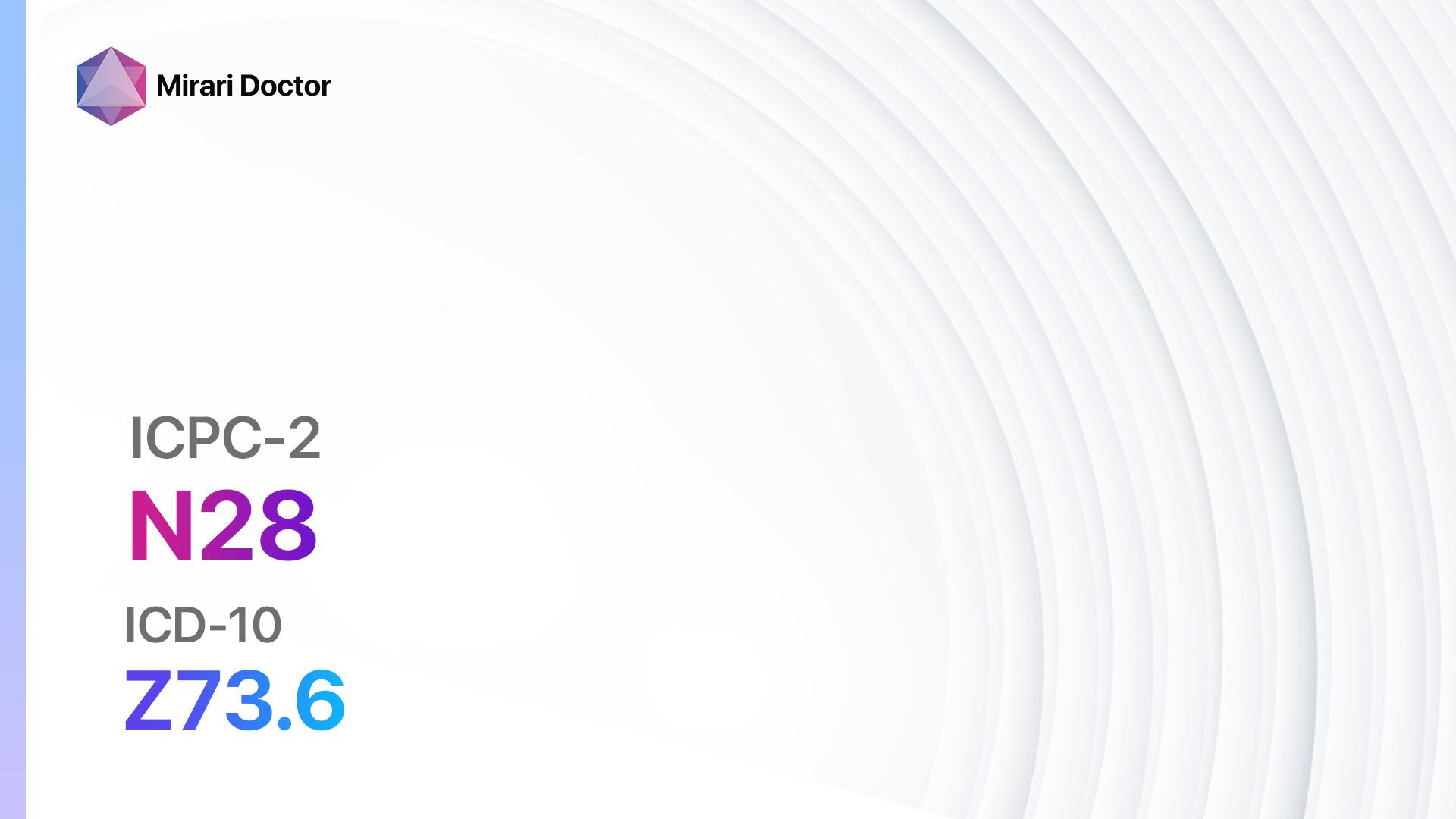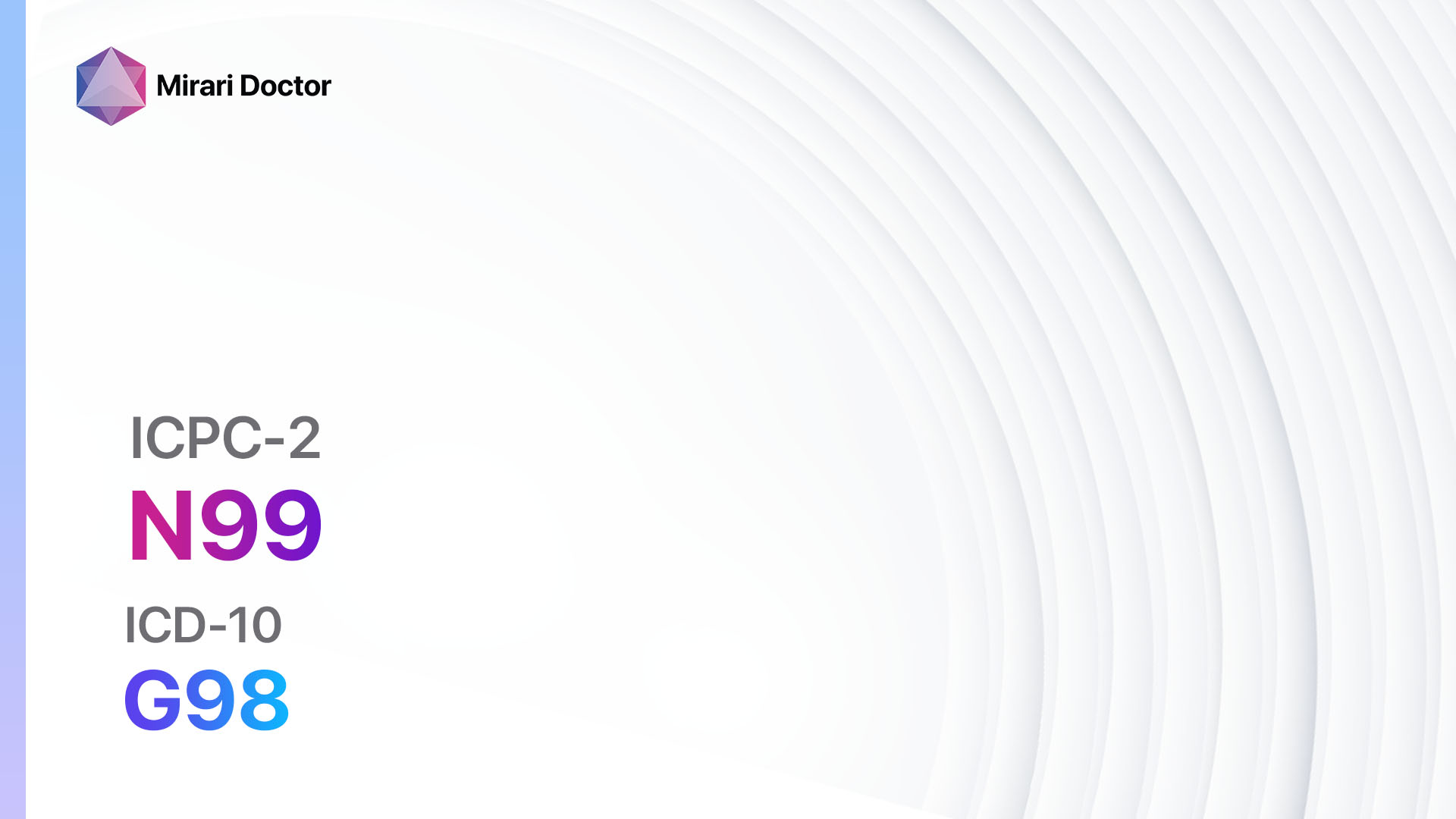
Introduction
Neurological diseases encompass a wide range of conditions that affect the nervous system, including the brain, spinal cord, and peripheral nerves. Neurological disease, other (ICPC-2: N99) refers to neurological conditions that do not fall under specific diagnostic categories. These conditions can vary in severity and presentation, making diagnosis and treatment challenging.[1] The aim of this guide is to provide a comprehensive overview of the diagnostic steps, possible interventions, and lifestyle modifications that can be considered for patients with neurological disease, other.
Codes
- ICPC-2 Code: N99 Neurological disease, other
- ICD-10 Code: G98 Other disorders of nervous system, not elsewhere classified[2]
Symptoms
- Cognitive impairment: Patients may experience difficulties with memory, attention, language, or problem-solving skills.[3]
- Motor abnormalities: This can include muscle weakness, tremors, or difficulty with coordination and balance.
- Sensory disturbances: Patients may have altered sensations, such as numbness, tingling, or pain.
- Autonomic dysfunction: Symptoms can include changes in blood pressure, heart rate, sweating, or bladder and bowel function.[4]
- Seizures: Some patients may experience recurrent seizures, which can vary in type and severity.
Causes
- Genetic factors: Some neurological diseases, other can be caused by genetic mutations or inherited conditions.[5]
- Environmental factors: Exposure to toxins, infections, or certain medications can contribute to the development of neurological diseases.
- Autoimmune disorders: Conditions such as multiple sclerosis or autoimmune encephalitis can result in neurological symptoms.[6]
- Traumatic brain injury: Head trauma can lead to long-term neurological complications.
- Metabolic disorders: Imbalances in hormones or nutrients can affect the nervous system.
Diagnostic Steps
Medical History
- Gather information about the patient’s symptoms, including their onset, duration, and progression.
- Identify any risk factors, such as family history of neurological diseases or exposure to toxins.
- Assess for any comorbid medical conditions that may contribute to the neurological symptoms.[7]
Physical Examination
- Perform a comprehensive neurological examination to assess motor function, sensory perception, reflexes, and coordination.
- Evaluate cognitive function, including memory, attention, language, and problem-solving skills.
- Assess autonomic function, such as blood pressure, heart rate, and pupillary responses.[8]
Laboratory Tests
- Complete blood count (CBC): To assess for any abnormalities, such as infections or anemia.
- Basic metabolic panel (BMP): To evaluate electrolyte imbalances or organ dysfunction.
- Inflammatory markers: Such as C-reactive protein (CRP) or erythrocyte sedimentation rate (ESR) to assess for inflammation.
- Autoimmune markers: Including antinuclear antibodies (ANA) or specific autoantibodies associated with neurological conditions.
- Genetic testing: In cases where a genetic cause is suspected, specific genetic tests may be ordered.[9]
Diagnostic Imaging
- Magnetic resonance imaging (MRI): To visualize the brain, spinal cord, and surrounding structures in detail.
- Computed tomography (CT) scan: Useful for assessing bony structures and detecting acute bleeding or masses.
- Electroencephalogram (EEG): Measures electrical activity in the brain and can help diagnose seizures or abnormal brain patterns.
- Nerve conduction studies (NCS) and electromyography (EMG): To evaluate nerve and muscle function.[10]
Other Tests
- Lumbar puncture: To analyze cerebrospinal fluid for signs of infection, inflammation, or other abnormalities.
- Biopsy: In some cases, a biopsy of affected tissue may be necessary to make a definitive diagnosis.
- Neurophysiological testing: This can include evoked potentials or transcranial magnetic stimulation to assess nerve and brain function.
Follow-up and Patient Education
- Schedule regular follow-up appointments to monitor disease progression and treatment response.
- Provide education to patients and their families about the nature of the neurological disease, its potential complications, and available support resources.
Possible Interventions
Traditional Interventions
Medications:
Top 5 drugs for Neurological disease, other:
- Antiepileptic drugs (e.g., Levetiracetam, Carbamazepine):
- Cost: Generic versions can range from $10 to $100 per month.
- Contraindications: Hypersensitivity to the medication, certain liver conditions.
- Side effects: Drowsiness, dizziness, nausea.
- Severe side effects: Stevens-Johnson syndrome, liver toxicity.
- Drug interactions: Oral contraceptives, certain antibiotics.
- Warning: Regular monitoring of blood levels may be required.
- Dopamine agonists (e.g., Pramipexole, Ropinirole):
- Cost: Generic versions can range from $10 to $100 per month.
- Contraindications: Hypersensitivity to the medication, certain heart conditions.
- Side effects: Nausea, dizziness, hallucinations.
- Severe side effects: Impulse control disorders, orthostatic hypotension.
- Drug interactions: Antipsychotics, certain antidepressants.
- Warning: Regular monitoring for potential side effects is necessary.
- Cholinesterase inhibitors (e.g., Donepezil, Rivastigmine):
- Cost: Generic versions can range from $10 to $100 per month.
- Contraindications: Hypersensitivity to the medication, certain gastrointestinal conditions.
- Side effects: Nausea, vomiting, diarrhea.
- Severe side effects: Bradycardia, syncope.
- Drug interactions: Anticholinergic medications, certain antibiotics.
- Warning: Regular monitoring of liver function may be required.
- Immunosuppressants (e.g., Prednisone, Azathioprine):
- Cost: Generic versions can range from $10 to $100 per month.
- Contraindications: Active infections, certain liver or kidney conditions.
- Side effects: Increased risk of infections, weight gain, mood changes.
- Severe side effects: Adrenal insufficiency, bone marrow suppression.
- Drug interactions: Nonsteroidal anti-inflammatory drugs (NSAIDs), certain antifungal medications.
- Warning: Regular monitoring of blood pressure, blood sugar, and bone density is necessary.
- Antidepressants (e.g., Sertraline, Escitalopram):
- Cost: Generic versions can range from $10 to $100 per month.
- Contraindications: Hypersensitivity to the medication, certain heart conditions.
- Side effects: Nausea, headache, sexual dysfunction.
- Severe side effects: Serotonin syndrome, suicidal thoughts.
- Drug interactions: Monoamine oxidase inhibitors (MAOIs), certain pain medications.
- Warning: Regular monitoring for potential side effects and suicidal ideation is necessary.
Alternative Drugs:
- Botulinum toxin injections: Used for the management of specific neurological symptoms, such as dystonia or spasticity. Cost: $500 to $1500 per injection session.
- Nerve blocks: Local anesthetic injections to block pain signals in specific nerves. Cost: $100 to $500 per session.
- Antiviral medications: Used for the treatment of viral infections that may cause neurological symptoms. Cost: Varies depending on the specific medication and duration of treatment.
- Immunoglobulin therapy: Intravenous administration of immunoglobulins to modulate the immune response. Cost: $5000 to $10,000 per infusion.
Surgical Procedures:
- Deep brain stimulation (DBS): Involves the implantation of electrodes in specific brain regions to modulate abnormal electrical activity. Cost: $50,000 to $100,000.
- Vagus nerve stimulation (VNS): Implantation of a device that delivers electrical impulses to the vagus nerve to reduce seizures or improve mood. Cost: $20,000 to $40,000.
- Neurosurgical resection: Surgical removal of abnormal brain tissue, such as tumors or epileptic foci. Cost: $50,000 to $200,000.
Alternative Interventions
- Acupuncture: May help alleviate pain and improve overall well-being. Cost: $60 to $120 per session.
- Chiropractic care: Manipulation of the spine to improve nervous system function. Cost: $50 to $200 per session.
- Massage therapy: Can help reduce muscle tension and promote relaxation. Cost: $50 to $100 per session.
- Herbal supplements: Some herbs, such as Ginkgo biloba or St. John’s wort, may have potential benefits for neurological symptoms. Cost: Varies depending on the specific supplement.
- Mind-body techniques: Practices such as meditation, yoga, or tai chi can help reduce stress and improve overall well-being. Cost: Varies depending on the specific program or class.
Lifestyle Interventions
- Regular exercise: Engaging in physical activity can help improve overall health and well-being. Cost: Varies depending on the specific activities or gym memberships.
- Healthy diet: Consuming a balanced diet rich in fruits, vegetables, whole grains, and lean proteins can support overall neurological health. Cost: Varies depending on individual food choices.
- Adequate sleep: Getting enough sleep is essential for optimal brain function. Cost: Varies depending on individual sleep habits and any necessary interventions for sleep disorders.
- Stress management: Techniques such as mindfulness, relaxation exercises, or therapy can help reduce stress and improve overall well-being. Cost: Varies depending on the specific techniques or therapy sessions.
- Social support: Maintaining strong social connections and seeking support from loved ones or support groups can positively impact neurological health. Cost: Varies depending on individual preferences and any associated costs for group activities or therapy sessions.
It is important to note that the cost ranges provided are approximate and may vary depending on the location and availability of the interventions. It is recommended to consult with healthcare professionals and insurance providers for accurate cost estimates and coverage information.
Mirari Cold Plasma Alternative Intervention
Understanding Mirari Cold Plasma
- Safe and Non-Invasive Treatment: Mirari Cold Plasma is a safe and non-invasive treatment option for various skin conditions. It does not require incisions, minimizing the risk of scarring, bleeding, or tissue damage.
- Efficient Extraction of Foreign Bodies: Mirari Cold Plasma facilitates the removal of foreign bodies from the skin by degrading and dissociating organic matter, allowing easier access and extraction.
- Pain Reduction and Comfort: Mirari Cold Plasma has a local analgesic effect, providing pain relief during the treatment, making it more comfortable for the patient.
- Reduced Risk of Infection: Mirari Cold Plasma has antimicrobial properties, effectively killing bacteria and reducing the risk of infection.
- Accelerated Healing and Minimal Scarring: Mirari Cold Plasma stimulates wound healing and tissue regeneration, reducing healing time and minimizing the formation of scars.
Mirari Cold Plasma Prescription
Video instructions for using Mirari Cold Plasma Device – N99 Neurological disease, other (ICD-10:G98)
| Mild | Moderate | Severe |
| Mode setting: 2 (Wound Healing) Location: 7 (Neuro system & ENT) Morning: 15 minutes, Evening: 15 minutes |
Mode setting: 2 (Wound Healing) Location: 7 (Neuro system & ENT) Morning: 30 minutes, Lunch: 30 minutes, Evening: 30 minutes |
Mode setting: 2 (Wound Healing) Location: 7 (Neuro system & ENT) Morning: 30 minutes, Lunch: 30 minutes, Evening: 30 minutes |
| Mode setting: 7 (Immunotherapy) Location: 1 (Sacrum) Morning: 15 minutes, Evening: 15 minutes |
Mode setting: 7 (Immunotherapy) Location: 1 (Sacrum) Morning: 30 minutes, Lunch: 30 minutes, Evening: 30 minutes |
Mode setting: 7 (Immunotherapy) Location: 1 (Sacrum) Morning: 30 minutes, Lunch: 30 minutes, Evening: 30 minutes |
| Mode setting: 7 (Immunotherapy) Location: 1 (Sacrum) Morning: 15 minutes, Evening: 15 minutes |
Mode setting: 7 (Immunotherapy) Location: 1 (Sacrum) Morning: 30 minutes, Lunch: 30 minutes, Evening: 30 minutes |
Mode setting: 7 (Immunotherapy) Location: 1 (Sacrum) Morning: 30 minutes, Lunch: 30 minutes, Evening: 30 minutes |
| Total Morning: 45 minutes approx. $7.50 USD, Evening: 45 minutes approx. $7.50 USD |
Total Morning: 90 minutes approx. $15 USD, Lunch: 90 minutes approx. $15 USD, Evening: 90 minutes approx. $15 USD |
Total Morning: 90 minutes approx. $15 USD, Lunch: 90 minutes approx. $15 USD, Evening: 90 minutes approx. $15 USD |
| Usual treatment for 7-60 days approx. $105 USD – $900 USD | Usual treatment for 6-8 weeks approx. $1,890 USD – $2,520 USD |
Usual treatment for 3-6 months approx. $4,050 USD – $8,100 USD
|
 |
|
Use the Mirari Cold Plasma device to treat Neurological disease, other effectively.
WARNING: MIRARI COLD PLASMA IS DESIGNED FOR THE HUMAN BODY WITHOUT ANY ARTIFICIAL OR THIRD PARTY PRODUCTS. USE OF OTHER PRODUCTS IN COMBINATION WITH MIRARI COLD PLASMA MAY CAUSE UNPREDICTABLE EFFECTS, HARM OR INJURY. PLEASE CONSULT A MEDICAL PROFESSIONAL BEFORE COMBINING ANY OTHER PRODUCTS WITH USE OF MIRARI.
Step 1: Cleanse the Skin
- Start by cleaning the affected area of the skin with a gentle cleanser or mild soap and water. Gently pat the area dry with a clean towel.
Step 2: Prepare the Mirari Cold Plasma device
- Ensure that the Mirari Cold Plasma device is fully charged or has fresh batteries as per the manufacturer’s instructions. Make sure the device is clean and in good working condition.
- Switch on the Mirari device using the power button or by following the specific instructions provided with the device.
- Some Mirari devices may have adjustable settings for intensity or treatment duration. Follow the manufacturer’s instructions to select the appropriate settings based on your needs and the recommended guidelines.
Step 3: Apply the Device
- Place the Mirari device in direct contact with the affected area of the skin. Gently glide or hold the device over the skin surface, ensuring even coverage of the area experiencing.
- Slowly move the Mirari device in a circular motion or follow a specific pattern as indicated in the user manual. This helps ensure thorough treatment coverage.
Step 4: Monitor and Assess:
- Keep track of your progress and evaluate the effectiveness of the Mirari device in managing your Neurological disease, other. If you have any concerns or notice any adverse reactions, consult with your health care professional.
Note
This guide is for informational purposes only and should not replace the advice of a medical professional. Always consult with your healthcare provider or a qualified medical professional for personal advice, diagnosis, or treatment. Do not solely rely on the information presented here for decisions about your health. Use of this information is at your own risk. The authors of this guide, nor any associated entities or platforms, are not responsible for any potential adverse effects or outcomes based on the content.
Mirari Cold Plasma System Disclaimer
- Purpose: The Mirari Cold Plasma System is a Class 2 medical device designed for use by trained healthcare professionals. It is registered for use in Thailand and Vietnam. It is not intended for use outside of these locations.
- Informational Use: The content and information provided with the device are for educational and informational purposes only. They are not a substitute for professional medical advice or care.
- Variable Outcomes: While the device is approved for specific uses, individual outcomes can differ. We do not assert or guarantee specific medical outcomes.
- Consultation: Prior to utilizing the device or making decisions based on its content, it is essential to consult with a Certified Mirari Tele-Therapist and your medical healthcare provider regarding specific protocols.
- Liability: By using this device, users are acknowledging and accepting all potential risks. Neither the manufacturer nor the distributor will be held accountable for any adverse reactions, injuries, or damages stemming from its use.
- Geographical Availability: This device has received approval for designated purposes by the Thai and Vietnam FDA. As of now, outside of Thailand and Vietnam, the Mirari Cold Plasma System is not available for purchase or use.
References
- World Health Organization. (2016). International Statistical Classification of Diseases and Related Health Problems 10th Revision.
- WONCA International Classification Committee. (2005). International Classification of Primary Care, Second edition (ICPC-2).
- Kirshner, H. S. (2021). Approach to the patient with cognitive impairment. UpToDate.
- Freeman, R., et al. (2011). Consensus statement on the definition of orthostatic hypotension, neurally mediated syncope and the postural tachycardia syndrome. Clinical Autonomic Research, 21(2), 69-72.
- Hersheson, J., et al. (2012). Mutations in the autoregulatory domain of β-tubulin 4a cause hereditary dystonia. Annals of Neurology, 71(4), 569-577.
- Dalmau, J., & Graus, F. (2018). Antibody-mediated encephalitis. New England Journal of Medicine, 378(9), 840-851.
- Campbell, W. W., & DeJong, R. N. (2005). DeJong’s The Neurologic Examination. Lippincott Williams & Wilkins.
- Brust, J. C. (2018). Current diagnosis & treatment: Neurology. McGraw-Hill Education.
- Hahn, S., & Tanner, C. M. (2021). Omic technologies for neurology. JAMA Neurology, 78(5), 515-516.
- Aminoff, M. J. (2012). Aminoff’s Electrodiagnosis in Clinical Neurology. Elsevier Health Sciences.
Related articles
Made in USA


